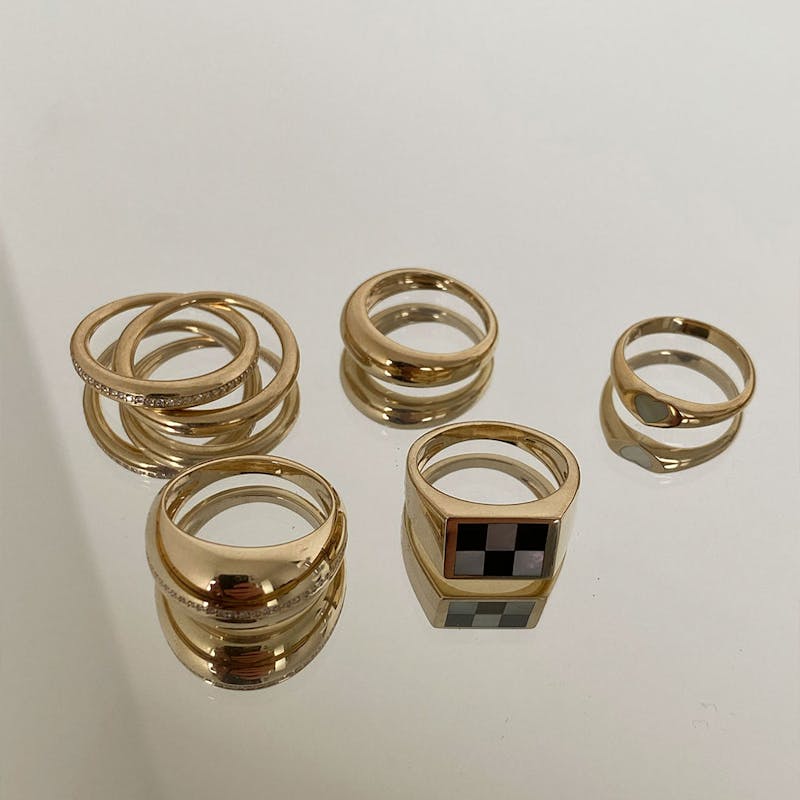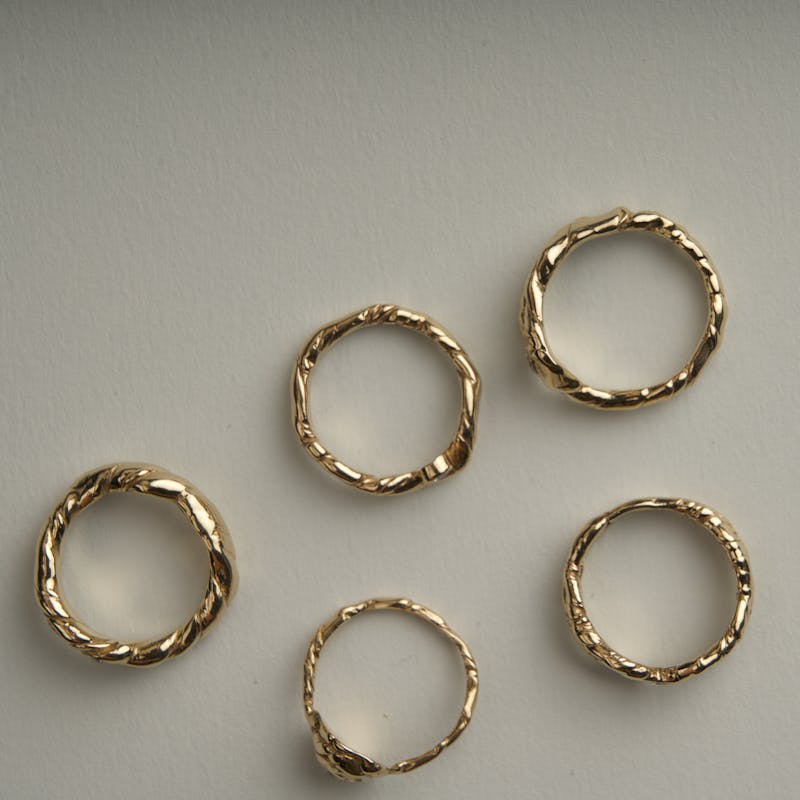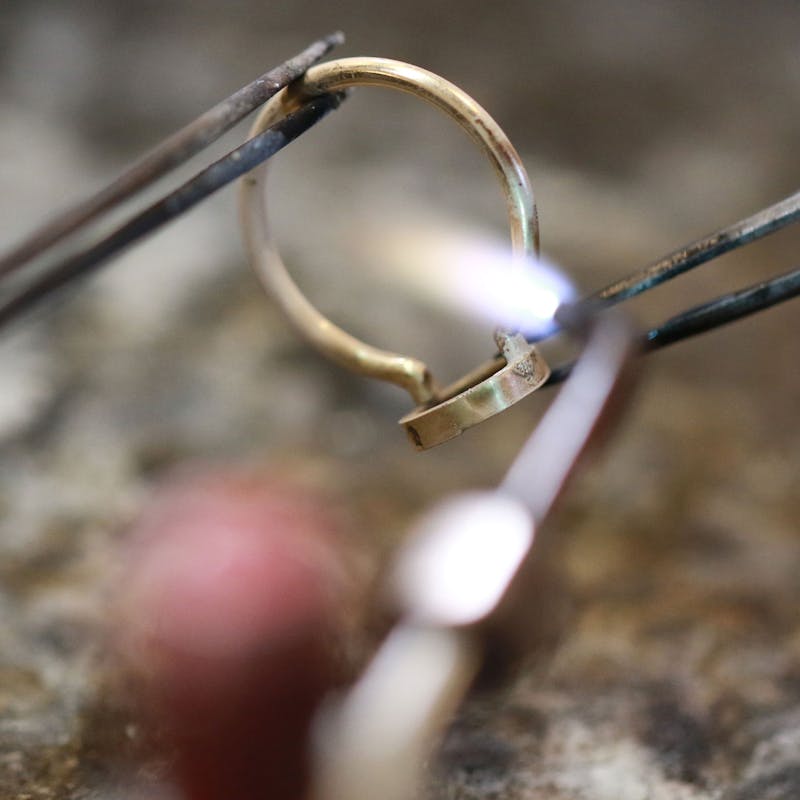Resizing an engagement ring

Resizing engagement rings is very common. While everyone would get the perfect ring size every time, the reality is it’s not always possible. From wanting to make the ring a total surprise to measuring at a less than ideal time – think while pregnant, on the hottest day of the year or just before a big weight gain or loss – getting an engagement ring size wrong happens.
But it’s not the end of the world. Resizing is something that is fairly easy, and we can help. Your Finematter purchase comes with a warranty, which includes free resizing within 30 days of purchase, amongst many other benefits.
If you haven’t bought your engagement ring with us, or if it’s been more than 30 days, we can still help. We have a resizing service that can be used by anyone.
The perfect fit – how should a ring fit?
An engagement ring is no different to other rings: it should fit snuggly but be comfortable.
What we mean by snug is this: you should be able to slide it on easily but it should have to pull a bit to take it off.
If the ring requires you to tug at it for a while to take it off, it’s too small. And if it slips off very easily, or can be spun around on your finger without any resistance, it’s too big.
Your knuckles are the largest part of your fingers, so your engagement ring should be able to get over it too easily.

How much does it cost to resize a ring?
The price of resizing a ring depends on which jeweller you ask to do the job.
At Finematter, we can either increase or decrease the size of your ring, to make it a perfect fit. The maximum increase or decrease in size is 3mm and ring resizing can be done on silver or gold jewellery only - we cannot resize palladium or titanium rings.
We charge £75 for our resizing service.
Can you go anywhere to get a ring resized?
Many jewellers offer ring resizing. You shouldn’t try and resize your ring yourself. Always untrust your real jewellery to a trusted jeweller.
Whoever you decide to give your ring to to get resized, it should be a professional jeweller. Speak to your jeweller and ask any questions you may have. If you know the ring needs to be resized but still aren’t sure about the size you need, a professional jeweller can advise and help you figure it out.
While resizing a ring is not necessarily difficult – this depends on the design of the ring and the size of the band, of course – it is still a technical skill that involves precious metals and gemstones.
What are the disadvantages of resizing a ring?
An engagement ring can be sized up or down a few times by a skilled jeweller. However, the constant tinkering with the metal may take its toll on the metal integrity, so it’s not recommended to get your ring resized too many times.
Of course, the number of times you can resize an engagement ring without losing metal integrity depends on the ring design. But in general, jewellers don’t recommend you resize a ring more than 2 to 4 times over its lifetime.
If you have already resized your ring multiple times and still need adjustments, another option is to replace the band down the line.

How long does it take to get a ring resized?
The time it takes to get a ring resized depends, again, on the ring design. A simple band can be resized very easily and fairly quickly, while intricate designs may need more work and will take longer.
At Finematter, ring resizing typically gets done within two to four days.
How are rings resized?
The process to resize a ring is easy, but it does depend on your engagement ring’s design.
To resize your ring, jewellers usually use one of two techniques: either cutting or adding metal, or stretching.
If your ring is too big, your jeweller will cut out a piece of the band and then reform it into its perfect shape, soldering it back together and polishing it so you won’t be able to tell where it was cut.
If your engagement ring is too small, the jeweller will need to add metal to the band. Again, the band will be cut, but this time, an extra piece of metal will be added to increase the size of the ring. It will then be soldered and polished, so it won’t be obvious where the ring was cut.
When using cuts to adjust size, the simpler the band of your engagement ring, the easier this process is. Bands with intricate designs or stones require more work, or may not be resizable – for example eternity bands with stones al around.
Stretching can’t be used on rings with gemstones at all. The reason for this is simple: the stretching method can thin the metal and distort the ring shape. The pressure applied may easily damage the gemstones on an engagement ring.
To stretch a ring, jeweller use a ring mandrel and a hammer to slowly expand the size of the band, so it seems obvious why gemstones may not like this process at all. Your jeweller may also use a hydraulic press or a roller to stretch the metal: again, not recommended when gemstones are involved.
You can also make a ring smaller without cutting the metal. The jeweller will use pliers or a ring clamp to tighten the ring. Again, this is not recommended with gemstones.

Rings that can’t be resized
We’re used to customers asking to go up or down 1 to 3 sizes, but beyond that, the resize can become tricky for some rings that are designed beyond a simple band - the shape of the ring may change, the placement on the finger may be off…
Full eternity bands, that have diamonds going around the whole ring, are not possible to resize. Tension engagement rings – with a gemstone held in place by the pressure from the metal around it – are also impossible to resize, since any change to the band would make the entire thing collapse.
At Finematter, we only resize rings made of silver or gold. Rings made of titanium, cobalt, tungsten carbide, and stainless steel are difficult – or impossible – to resize due to the metal properties. Some jewellers may also avoid resizing rose gold as it can crack easily under pressure.
Non-metallic rings (resin, crystal, or ceramic) can’t be resized, while plated metals may also be on the no resizing list, as the plating may flake when resizing.
When not to resize your ring?
Because it’s not recommended to resize your engagement too many times, you may not want to get your ring resized every time your weight fluctuates.
Weather-related fluctuations – think extreme heat or cold, humidity, dryness… - can affect the size of your fingers, temporarily. Incredibly, a night out followed by salty food may also cause water retention and affect your fingers.
Before rushing to your jeweller to get the ring resized, you may want to wear a tighter ring with it to keep your engagement ring falling off.
If your fingers seem to swell up and down regularly, you may want to consider temporary resizing options that will not impact the integrity of your ring.
Other ring resizing options
A temporary ring adjuster may be what you need if your ring seems too loose one day and just perfect the next.
If your ring is too small, unfortunately, you will need resizing. But for rings that are sometimes too big – but not always – you may want to consider other options.
A fold-over or ring guard is a U-shaped bar that will be soldered across the bottom of your ring. With a hinge and a latch, the ring can be adjusted several sized smaller. However, this is a temporary solution and should not be used as an alternative to resizing, unless your ring can’t be resized at all – think eternity bands.
Sizing assistants can also be used if your issue is the swinging of a top-heavy ring, or large gemstone ring.
Two small beads can be placed inside the ring to stop it from moving. Located inside the band, two small gold balls will decrease ring size and keep your ring upward. They will decrease the ring by half a size, so if you need a bigger size adjustment, they won’t help. Note that not everyone finds this solution comfortable either, so if you need a more permanent solution, resizing may be a better option.
A spring insert can also be fitted to the inside of your ring to make it fit more snuggly.
At Finematter, we don’t offer any inserts to make the ring smaller. We’ve found them to be somewhat unreliable, so would not recommend them as a long-term solution to sizing issues.